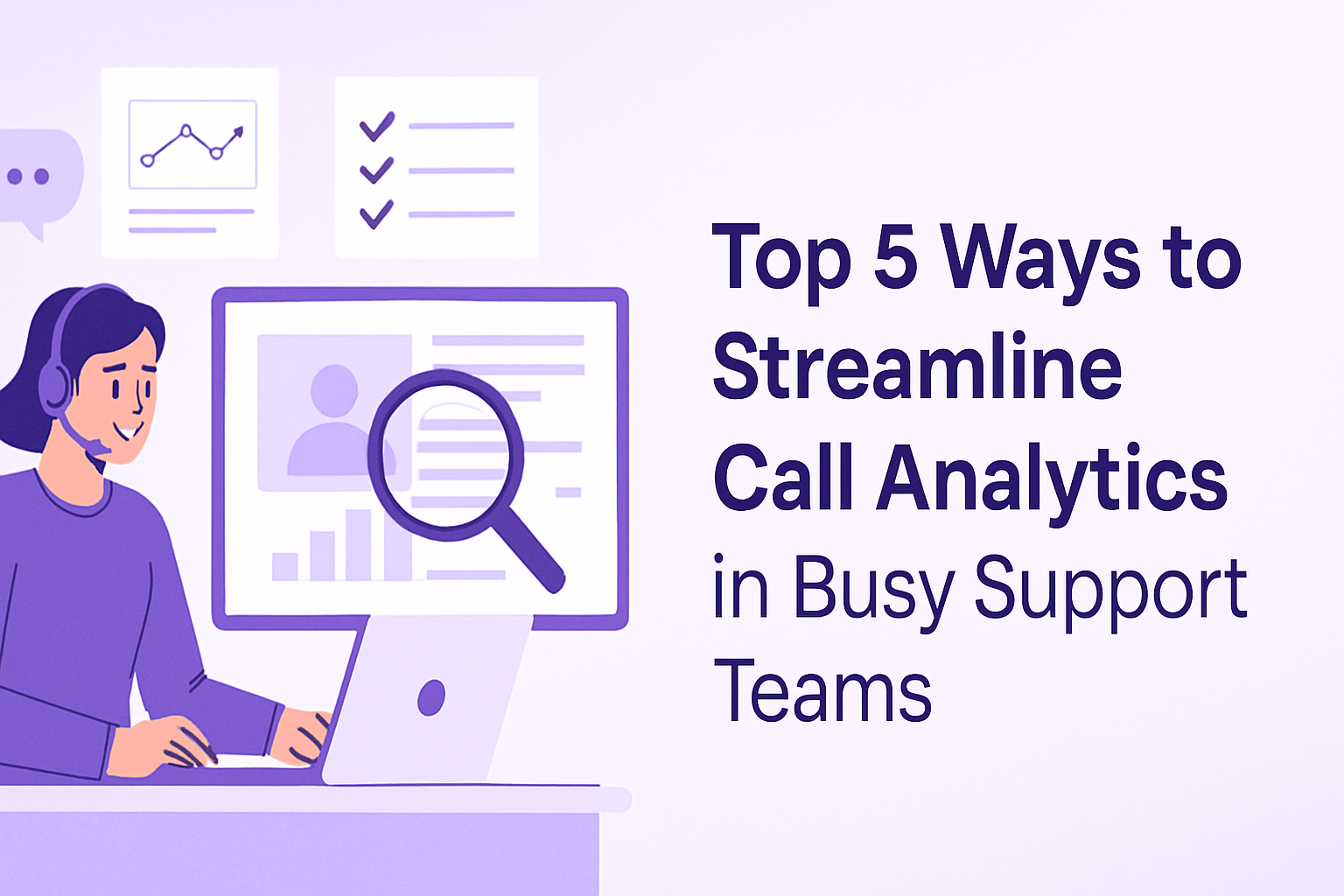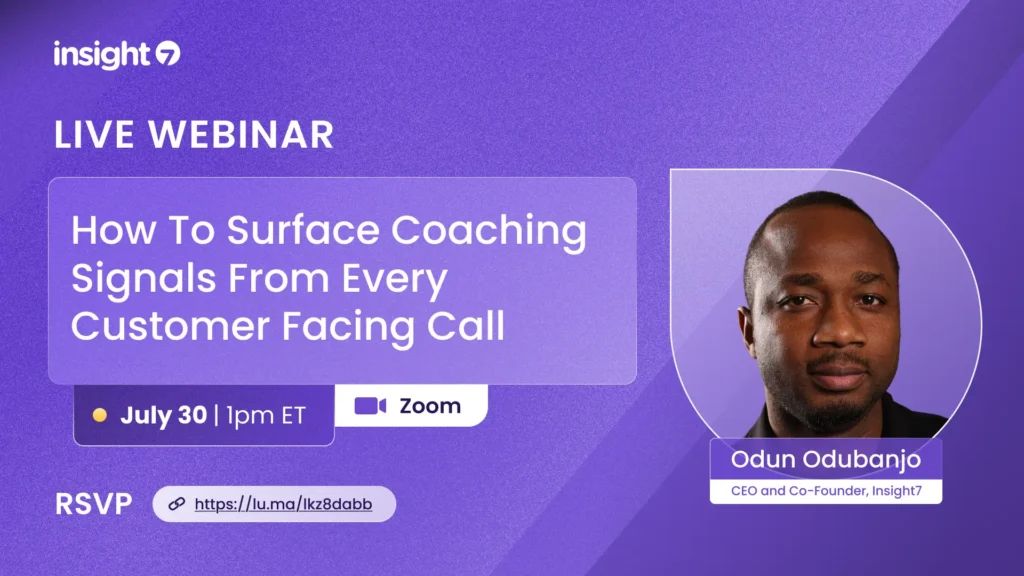Best Practices for Integrating Journey Automation with Call Evaluation
-
Hello Insight
- 10 min read
Best Practices for Integrating Journey Automation with Call Evaluation
In today's competitive B2B landscape, companies are increasingly turning to journey automation and call evaluation to refine their customer interactions and product offerings. A staggering 70% of organizations report that understanding the customer journey is critical for their success, yet many struggle to draw actionable insights from their customer conversations. Integrating journey automation with call evaluation presents a unique opportunity to leverage customer feedback effectively, streamline operations, and drive product development.
Definition of Journey Automation and Call Evaluation
Journey Automation refers to the use of technology to automate customer interactions across various touchpoints in their journey with a brand. This could involve automating follow-ups, reminders, and personalized engagement based on customer behavior and preferences.
Call Evaluation, on the other hand, is the systematic process of analyzing customer interactions over the phone to assess performance, adherence to best practices, and overall customer satisfaction. This process typically includes scoring calls based on predefined criteria and providing feedback to agents for continual improvement.
The integration of these two practices is essential as it allows organizations to harness the wealth of information generated during customer interactions to improve both the customer experience and internal processes.
Stakeholder Usage:
- Sales Teams (for enhancing customer interactions and closing deals)
- Customer Support Teams (for improving service quality and response times)
- Product Development Teams (to gather insights for feature enhancements)
- Marketing Teams (for tailoring campaigns based on customer feedback)
Value Proposition: Integrating journey automation with call evaluation not only enhances customer satisfaction but also equips teams with data-driven insights that inform product development and go-to-market strategies.
Benefits List: With this integrated approach, you can:
- Streamline communication across departments
- Enhance customer experience through personalized interactions
- Identify key trends and themes from customer feedback
- Improve training and coaching for agents based on real data
- Make informed decisions about product features and marketing strategies
Summary Statement: Elevating your customer interactions through automation and evaluation is not just a strategy; it's a necessity for thriving in the modern business landscape.
Key Elements of Integration
Introduction: To successfully integrate journey automation with call evaluation, it is crucial to understand the key elements that contribute to its effectiveness.
Key Elements List:
- Data Synchronization: Ensure that all customer interaction data from various platforms (like Salesforce, Gong, Slack, and Hubspot) is synchronized. This creates a comprehensive view of the customer journey.
- Flexible Evaluation Criteria: Define evaluation criteria that can be adjusted based on current priorities. For example, if the focus is on improving issue understanding, weight these criteria more heavily in evaluations.
- Real-Time Feedback Mechanisms: Implement systems that provide agents with immediate feedback on their performance, allowing for quick adjustments and improvements.
Connecting Statement: By focusing on these elements, organizations can create a robust framework for integrating journey automation with call evaluation, leading to improved customer satisfaction and operational efficiency.
Impact of Integration
Impact Statement: The integration of journey automation and call evaluation significantly transforms customer interactions and internal processes more than most realize.
Quantified Example: Companies that implement these practices report a 20% increase in customer satisfaction scores within the first six months. Additionally, businesses often see a reduction in churn rates by up to 15%.
Common Problems: Without an integrated system for journey automation and call evaluation, organizations often face:
- Siloed data across departments leading to fragmented customer insights
- Inefficiencies in analyzing customer feedback manually
- Missed opportunities for identifying customer pain points
Solution Benefit: By merging these practices, companies can save time, enhance efficiency, and make informed decisions that drive customer-centric improvements.
Bottom Line: Effective integration leads to improved customer experiences and operational excellence.
Implementation Strategies
Philosophy: The guiding principle for successful integration lies in focusing on customer engagement and continuous improvement rather than merely following steps.
Key Objectives: Practitioners should aim to:
- Establish clear benchmarks for integration success
- Foster collaboration between departments
- Use customer feedback to drive product and service improvements
Framework Structure: The recommended approach includes:
Framework Component 1
Data Collection: Utilize tools to gather data from multiple customer interaction points, ensuring comprehensive insight into the customer journey.
Framework Component 2
Criteria Development: Create dynamic evaluation criteria that can evolve based on ongoing customer feedback and business goals.
Framework Component 3
Feedback Loop: Establish a process for continuous feedback from agents and customers to refine both journey automation and call evaluation practices.
Framework Component 4
Training and Development: Implement regular training sessions for agents based on insights gained from evaluations to improve their performance continuously.
Implementation Note: Leveraging technology like Insight7's InsightGraph can significantly enhance the integration process by providing actionable insights from customer interactions across various platforms.
Advanced Practices
Introduction: Top-performing companies approach the integration of journey automation and call evaluation with a mindset geared towards innovation and continuous improvement.
Advanced Components: An advanced integration strategy includes:
- AI-Driven Analytics: Utilize AI tools to analyze customer calls for sentiment and compliance, providing real-time suggestions to agents.
- Empathy Mapping: Develop visualizations that help teams understand customer emotions and responses during interactions, enhancing the training experience.
- Segmented Feedback: Implement systems that provide tailored feedback to agents based on specific customer segments or interaction types.
Example Model/Framework:
- Data Integration (100% of customer interactions analyzed)
- Custom Evaluation Criteria (weighted based on quarterly goals)
- Real-Time Coaching (feedback provided within minutes of call completion)
Expert Practice: The most sophisticated practitioners continuously iterate on their integration strategies, using data-driven insights to refine their approaches and stay ahead of customer expectations.
Timing for Integration
Timing Philosophy: The integration of journey automation and call evaluation should be a regular part of operations, with a focus on balancing frequency to avoid burnout.
Optimal Triggers:
- When launching a new product or service
- Following significant updates to customer journey mapping
- At regular intervals (monthly or quarterly) to assess progress
Frequency Guidelines:
- Sales Teams: Weekly reviews of call evaluations to adjust strategies promptly
- Customer Support Teams: Monthly training sessions based on the latest evaluation data
- Product Development Teams: Quarterly analysis of customer feedback to inform product roadmaps
Pro Tip: Schedule regular intervals for cross-departmental meetings to discuss insights gained from call evaluations and journey automation efforts.
Tools and Resources
Problem Statement: As customer interactions grow, manual approaches to journey automation and call evaluation become insufficient, necessitating robust tools and resources.
Top Tools for Integration
Insight7 – Offers powerful analytics to analyze customer interactions and automate call evaluations.
Gong – Provides insights into sales calls, enabling teams to identify successful strategies and areas for improvement.
HubSpot – A comprehensive CRM that integrates customer journey data with call evaluations for richer insights.
Salesforce – Helps manage customer feedback and interactions across various channels, streamlining the evaluation process.
Selection Criteria: Choose tools based on their ability to integrate seamlessly with existing systems and provide actionable insights that drive decision-making.
Measurement of Success
Purpose Statement: Measuring the success of integrated journey automation and call evaluation practices is critical—activity alone doesn't equate to results.
Core Metrics:
- Customer Satisfaction Score (CSAT) – Measures how satisfied customers are with services provided.
- Net Promoter Score (NPS) – Evaluates customer loyalty and likelihood of recommending the service.
- First Call Resolution Rate – Indicates how effectively issues are resolved on the first contact.
Implementation Tip: Regularly review these metrics to ensure that the integration continues to deliver value and aligns with business objectives.
Conclusion
Immediate Action Items:
- Assess your current journey automation and call evaluation practices.
- Identify gaps in data synchronization and evaluation criteria.
- Implement regular training sessions based on call evaluations.
Long-term Vision: Over time, organizations that successfully integrate journey automation with call evaluation will not only enhance customer satisfaction but also drive innovation and growth, positioning themselves as leaders in their industries.






